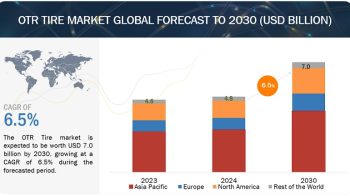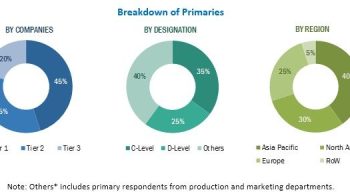
The global connected car market is projected to grow from USD 12.4 billion in 2024 to USD 26.4 billion by 2030, at a CAGR of 13.3% during the forecast period. The introduction of several laws requiring safety features like e-call, navigation, collision warning systems, etc., is anticipated to increase the uptake of connected car services worldwide. The rising sales of high-end and luxury automobiles partly drive the growing demand for connected car services. The market for connected cars will expand as long as connected car hardware and software advance. For example, in November 2021, Continental created an intelligent program that allows complex driving maneuvers to be performed automatically as a technological solution for highly automated driving. Highly autonomous driving from Level 3 is made possible by an innovative software program called the Next Generation Driving Planner. This implies that cars can manage some driving duties without assistance from a driver.
Cellular Network is anticipated to be the fastest growing segment by network type during the forecast period” as the cellular network plays a vital role in the rapid growth of the connected car market, driving innovation and creating new revenue streams for various stakeholders. One significant aspect contributing to expanding cellular networks in connected cars is the adoption of eSIMs (Embedded SIMs). These eSIMs enable seamless connectivity by connecting vehicles to multiple operators, enhancing security, and providing flexibility in selecting local operators based on the vehicle’s location. By supporting the GSMA Embedded SIM Specification, the automotive sector has embraced a new era of connected cars, where vehicles can leverage cellular connectivity for a wide range of services, from navigation to remote diagnostics, transforming the driving experience and paving the way for advanced features like OTA updates and autonomous driving.
Download PDF Brochure @ https://www.marketsandmarkets.com/pdfdownloadNew.asp?id=102580117
Moreover, integrating cellular networks in connected cars has opened new revenue opportunities and business models. Service providers leverage the vast data connected vehicles generate to offer innovative services and solutions. For instance, the data collected from connected cars can be utilized for various applications such as fleet management, in-vehicle entertainment, navigation, and advanced driver assistance services. This data-driven approach enhances the driving experience for consumers and enables service providers to create value-added services, optimize operations, and establish partnerships within the automotive ecosystem. By monetizing data and offering tailored services based on connectivity, service providers are transforming the connected car market into a lucrative sector with immense potential for growth and profitability.
The Aftermarket connected car Services segment holds the largest market share in the connected car market during the forecast period.
The aftermarket segment generates new revenue pockets for the connected car market by providing products and services that upgrade and enhance existing vehicles with advanced connectivity and performance features. In North America, this trend is driven by a tech-savvy consumer base and a high demand for connectivity enhancements. Companies like Verizon have capitalized on this with the Hum service, which offers a plug-in device that adds vehicle diagnostics, emergency assistance, and Wi-Fi hotspot capabilities to older cars. These aftermarket solutions allow consumers to enjoy modern connectivity features without purchasing new vehicles, creating lucrative opportunities for tech companies and service providers.
In Europe, the aftermarket segment is expanding rapidly with 43–47% of people choose for resubscribing the service. Also, the due to stringent regulatory standards and a strong focus on vehicle safety and environmental performance, the European consumers are increasingly adopting aftermarket advanced driver-assistance systems (ADAS) like collision avoidance and lane-keeping assist systems to comply with safety regulations and lower insurance premiums. Companies such as Bosch and Continental offer sophisticated aftermarket ADAS solutions that enhance vehicle safety and connectivity. Additionally, the growing popularity of telematics insurance, where drivers install devices to monitor driving behavior for customized insurance rates, is creating new revenue streams for insurers and aftermarket telematics providers, particularly in countries like the UK and Germany.
In the Asia-Pacific region, the aftermarket segment is driven by a rising middle class and increasing vehicle ownership and nearly 28–33% of people choose resubscribing the connected car services. Consumers in countries like China and India are keen on upgrading their vehicles with the latest connectivity features, driving demand for aftermarket infotainment systems, navigation units, and connected car accessories. For example, Alibaba’s Tmall Genie Auto, an AI-powered intelligent assistant, can be installed in cars to provide voice-controlled navigation, entertainment, and smart home integration. This trend reflects the region’s interest in integrating advanced technology into daily life. The high penetration of smartphones and mobile internet in Asia-Pacific further supports the adoption of connected car aftermarket products, presenting significant revenue potential for technology companies and service providers.
Key Players
Major manufacturers in the connected car market include Continental AG (Germany), Robert Bosch GmbH (Germany), Harman International (US), Airbiquity (US), and Visteon (US).
Request Free Sample Report @ https://www.marketsandmarkets.com/requestsampleNew.asp?id=102580117


